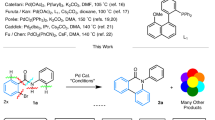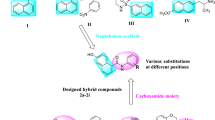Abstract
Candida antarctica lipase B (Cal-B) is one of the most recognized biocatalysts because of its high degree of selectivity in a broad range of synthetic applications of industrial importance. Herein, the substituent effects involved in transesterification catalyzed by Cal-B are explored in detail using a combination of experimental analysis and theoretical modeling. The transesterification ability of Cal-B was experimentally determined with 22 vinyl ester analogs and ribavirin as substrates and, on this basis, a series of quantitative structure-activity relationship (QSAR) models are developed using various structural parameters characterizing the variation in substituent groups of the substrate molecules. The resulting models exhibit a good stability and predictive power, from which five most important properties are highlighted and engaged to ascertain the structural basis and reaction mechanism underlying the transesterification. From the modeling analysis it is seen that the size, geometry, and charge distributions of substrate exert a significant effect on reaction yield, where, the size of the substituent group was the most significant impact factor on the reaction yield, the charge distribution was the second, and then the topological structure of the substrate.

Can the QSAR explore the transesterfication reaction catalyzed by the Candida antarctica lipase B?


Similar content being viewed by others
References
Acetti D, Brenna E, Fuganti C, Gatti FG, Serra S (2009) Enzyme-catalysed approach to the preparation of triazole antifungals: synthesis of (−)-genaconazole. Tetrahedron-Asymmetry 20:2413–2420
Alatorre-Santamaria S, Gotor-Fernandez V, Gotor V (2009) Stereoselective chemoenzymatic synthesis of enantiopure 1-(Heteroaryl)ethanamines by lipase-catalysed kinetic resolutions. Eur J Org Chem 15:2533–2538
Asikainen M, Krause N (2009) Tandem enzyme/gold-catalysis: from racemic alpha-allenic acetates to enantiomerically enriched 2,5-dihydrofurans in one pot. Adv Synth Catal 351:2305–2309
Banoth L, Singh M, Tekewe A, Banerjee U (2009) Increased enantioselectivity of lipase in the transesterification of dl-(+/−)-3-phenyllactic acid in ionic liquids. Biocatal Biotransfor 27:263–270
Reetz MT, Wu S (2009) Laboratory evolution of robust and enantioselective Baeyer-Villiger monooxygenases for asymmetric catalysis. J Am Chem Soc 131:15424–15432
Reetz MT (2002) Lipases as practical biocatalysts. Curr Opin Chem Biol 6:145–150
Yelekci K, Karahan O, Toprakci M (2007) Docking of novel reversible monoamine oxidase-B inhibitors: efficient prediction of ligand binding sites and estimation of inhibitors thermodynamic properties. J Neural Transm 114:725–732
Sotriffer CA, Flader W, Winger RH, Rode BM, Liedl KR, Varga JM (2000) Automated docking of ligands to antibodies: methods and applications. Methods 20:280–291
Pujadas G, Vaque M, Ardevol A, Blade C, Salvqado MJ, Blay M, Fernandez-Larrea J, Arola L (2008) Protein-ligand docking: a review of recent advances and future perspectives. Curr Pharm Anal 4:1–19
Hess B, Kutzner C, Spoel DVD, Lindahl E (2008) GROMACS 4: algorithms for highly efficient, load-balanced, and scalable molecular simulation. J Chem Theor Comput 4:435–447
MacKerell AD, Banavali NK (2000) All-atom empirical force field for nucleic acids: II. Application to molecular dynamics simulations of DNA and RNA in solution. J Comput Chem 21:105–120
Karplus M, McCammon JA (2002) Molecular dynamics simulations of biomolecules. Nat Struct Biol 9:646–652
Allison JR, Bergeler M, Hansen N, van Gunsteren WF (2011) Current computer modeling cannot explain why two highly similar sequences fold into different structures. Biochemistry 50:10965–10973
Monard G, Merz KM (1999) Combined quantum mechanical/molecular mechanical methodologies applied to biomolecular systems. Acc Chem Res 32:904–911
Tian L, Friesner RA (2009) QM/MM simulation on P450 BM3 enzyme catalysis mechanism. J Chem Theor Comput 5:1421–1431
Szeto MWY, Mujika JL, Zurek J, Muholland AJ, Harvey JN (2009) QM/MM study on the mechanism of peptide hydrolysis by carboxypeptidase A. J Mol Struct (THEOCHEM) 898:106–114
Ni Z, Jin X, Zhou P, Wu Q, Lin XF (2011) A combination of computational and experimental approaches to investigate the binding behavior of B.sub lipase a mutants with substrate pNPP. Mol Inf 30:359–367
Ni Z, Zhou P, Jin X, Lin XF (2011) Integrating in silico and in vitro approaches to dissect the stereoselectivity of Bacillus subtilis lipase a toward Ketoprofen Vinyl Ester. Chem Biol Drug Des 78:301–308
Moro G, Vonati L, Bruschi M, Cosentino U, Gioia LD, Fantucci PC, Pandini A, Papaleo E, Pitea D, Saracino GAA (2007) Computational approaches to shed light on molecular mechanisms in biological processes. Theo Chem Acc 117:723–741
Bello JF, Llama EF, del Campo C, Cabezas MJ, Sinisterra JV (1993) Structure activity relationship relationship in the hydrolysis of N-benzoylphenylalanine esters catalyzed by alpha-chymotrypsin. J Mol Catal 78:91–112
Debnath AK (2005) Application of 3D-QSAR techniques in anti-HIV-1 drug design—an overview. Curr Pharm Des 11:3091–3110
Brown N, Lewis RA (2006) Exploiting QSAR methods in lead optimization. Curr Opin Drug Disc 9:419–424
Wang P, Bai HW, Zhu BT (2010) Structural basis for certain naturally occurring bioflavonoids to function as reducing co-substrates of Cyclooxygenase I and II. PLoS One 5:e12316
Gu J, Liu J, Yu H (2011) Quantitative prediction of enantioselectivity of Candida antarctica lipase B by combining docking simulations and quantitative structure–activity relationship (QSAR) analysis. J Mol Catal B Enzym 72:238–247
Shokhen M, Traube T, Vijayakumar S, Hirsch M, Uritsky N, Albeck A (2011) Differentiating serine and cysteine protease mechanisms by new covalent QSAR descriptors. Chem Bio Chem 12:1023–1026
Juhl PB, Doderer K, Hollmann F, Thum O, Pleiss J (2010) Engineering of Candida antarctica lipase B for hydrolysis of bulky carboxylic acid esters. J Biotechnol 150:474–480
Zhang YH, Xu CF, Li JF, Yuan CY (2003) Enzymatic synthesis of optically active delta-hydroxy-beta-ketoalkanephosphonates. Tetrahedron Asymmetr 14:63–70
Vieira TO, Ferraz MCF, Andrade LH, Porto ALM (2006) Highly enantioselective enzymatic resolution of cis-fused octalols mediated by Candida antarctica lipase (Novozym 435). Tetrahedron Asymmetr 17:1990–1994
Zhang NY, Suen WC, Windsor W, Xiao L, Madison V, Zaks A (2003) Improving tolerance of Candida antarctica lipase B towards irreversible thermal inactivation through directed evolution. Protein Eng 16:599–605
Hernandez K, Fernandez-Lafuente R (2011) Lipase B from Candida antarctica immobilized on octadecyl Sepabeads: a very stable biocatalyst in the presence of hydrogen peroxide. Process Biochem 46:873–878
Katritzky AR, Lgnatchenko ES, Barcock RA, Lobanov VS, Karelson M (1994) Prediction of gas-chromatographic retention times and response factors using a general quantitative structure–property relationship treatment. Anal Chem 66:1799–1807
Ivanciuc O (1997) CODESSA version 2.13 for windows. J Chem Inf Comput Sci 37:405–406
Karelson M, Maran U, Wang YL, Katritzky AR (1999) QSPR and QSAR models derived using large molecular descriptor spaces. A review of CODESSA applications. Collect Czech Chem C 64:1551–1571
Neves-Petersen MT, Petersen EL, Fojan P, Noronha M, Madsen RG, Petersen SB (2001) Engineering the pH-optimum of a triglyceride lipase: from predictions based on electrostatic computations to experimental results. J Biotechnol 87:225–254
Petersen MTN, Fojan P, Petersen SB (2001) How do lipases and esterases work: the electrostatic contribution. J Biotechnol 85:115–147
Zefirov NS, Palyulin VA (2002) Fragmental approach in QSPR. J Chem Inf Comput Sci 42:1112–1122
Gasteiger J, Marsili M (1980) Iterative partial equalization of orbital electronegativity—a rapid access to atomic charges. Tetrahedron 36:3219–3228
Schrag JD, Li YG, Wu S, Cygler M (1991) Ser-His-Glu triad forms the catalytic site of the lipase from geotrichum-candidadum. Nature 351:761–764
Acknowledgments
This work was supported by the National Basic Research Program of China (973 Program, No 2011CBA00801 and 2009CB724700).
Author information
Authors and Affiliations
Corresponding author
Electronic supplementary material
Below is the link to the electronic supplementary material.
ESM 1
(DOC 277 kb)
Rights and permissions
About this article
Cite this article
Ni, Z., Lin, X. Insight into substituent effects in Cal-B catalyzed transesterification by combining experimental and theoretical approaches. J Mol Model 19, 349–358 (2013). https://doi.org/10.1007/s00894-012-1552-7
Received:
Accepted:
Published:
Issue Date:
DOI: https://doi.org/10.1007/s00894-012-1552-7




